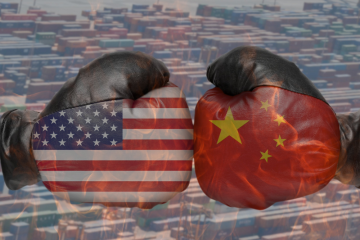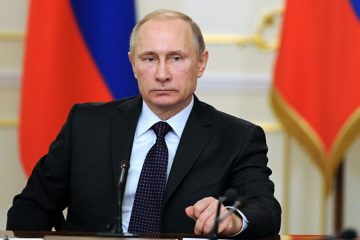China is currently exempt from several tariffs

China has thus far experienced a relatively lenient approach to tariffs. The Chinese economy exhibits significant vulnerability due to its dependence on exports as a primary engine of growth. China appears to have navigated President Trump’s initial offensive in a renewed trade conflict with relative ease. However, there is little expectation in Beijing that this will be the final occurrence. Trump’s choice to impose an additional 10% tariff on Chinese imports appears to be a preliminary strike in what is anticipated to be a pivotal arena in the president’s overarching campaign to redefine the global economic order according to his preferences.
Notwithstanding the more assertive early actions directed at Canada and Mexico, China continues to be the primary focus of trade policy under the Trump administration. The superpower is vying with the United States for international influence and, having secured a significant portion of global manufacturing, is now accelerating efforts to contest American preeminence in artificial intelligence and other cutting-edge technologies. Imposing significantly higher tariffs on China, exceeding 60%, was a hallmark commitment of Trump’s presidential campaign. The forthcoming tariff that Trump has announced on Chinese imports, set to take effect on Tuesday, appears to be an initial installment in a broader strategy of escalations intended to rectify what the president perceives as an imbalanced and inequitable trade relationship.
Analysts suggest that a pivotal juncture may arise around April 1, when U.S. agencies are expected to deliver their findings to the White House regarding the origins and potential solutions to the nation’s enduring trade deficits, along with the associated national-security ramifications. In 2024, China’s exports to the United States outstripped imports by $360 billion, as reported by Chinese customs data. This disparity represents a 23% increase compared to the situation when tariffs were first imposed on China by Trump in 2018. China’s surplus with the world serves as a formidable tool for retaliation, heightening concerns of an impending trade war that threatens to inflict significant harm on both nations and the broader global economy. China finds itself in a precarious position due to its heavy dependence on exports for economic growth, a consequence of governmental initiatives aimed at stimulating manufacturing to counteract a downturn in the real estate sector and tepid consumer demand.
The ultimate objective of Trump’s trade confrontation with China remains ambiguous. It is uncertain whether he aims to reach a negotiated agreement with Beijing or intends to utilize tariffs and other mechanisms to facilitate a more pronounced economic separation, akin to the “decoupling” strategy championed by influential figures in his administration, including Secretary of State Marco Rubio. Nonetheless, analysts identify benefits for both parties in seeking an accord to prevent a protracted trade dispute—albeit they acknowledge the challenges that lie ahead in finalizing an agreement. “Market dynamics may incentivize both parties to reach an agreement,” noted Mansoor Mohi-uddin, chief economist at the Bank of Singapore, a private financial institution, referencing Trump’s responsiveness to fluctuations in the stock market and the concerns of Chinese officials regarding instability in the yuan. “Ultimately, Trump is likely to exercise caution regarding potential market downturns and the associated blame that may follow.”
The White House announced on Saturday that illegal immigration, along with the dangers presented by fentanyl and other narcotics, qualifies as a national emergency according to U.S. legislation that grants the president extensive authority to levy tariffs on imports. The White House announced that energy imports from Canada will incur a 10% tariff, while all other imports from the northern neighbor of the U.S. will be subject to a 25% levy. Goldman Sachs reports that Mexico faces a 25% tariff, while China is subject to a 10% tariff, in addition to the existing average levies of approximately 14% on most Chinese goods. It was unexpected for numerous economists that China received a more lenient approach in Trump’s initial trade offensive compared to Canada and Mexico, both of which are considered U.S. allies with significant connections to the American economy.
Rory Green, chief China economist at GlobalData-TSLombard in London, posits that this indicates Trump’s willingness to engage in negotiations with Chinese leader Xi Jinping, suggesting that decoupling is not his primary objective. “It appears he is engaging in negotiations without exerting significant pressure on Xi Jinping,” he remarked. China’s preliminary reaction involved announcing its intention to contest the tariffs at the WTO, a procedure that is likely to extend over several years. The absence of any announced tariffs on U.S. imports or other retaliatory actions was notable, with the Ministry of Commerce emphasizing the need for “frank dialogue” between the two parties in its statement.
China is reportedly gearing up for negotiations, with an initial proposal focused on a pledge to curb fentanyl-related trade, reinstating a 2020 initiative to purchase additional U.S. goods and a commitment to enhance investment in critical sectors like battery manufacturing within the United States. Analysts identify significant barriers to achieving a viable accord. China is expected to seek a relaxation of U.S. export restrictions on semiconductors and other advanced technologies as a component of any agreement, restrictions that the U.S. has implemented citing national security concerns. The United States is expected to remain unsatisfied with mere assurances of increased Chinese acquisitions of American goods, particularly given China’s previous failure to meet purchase commitments. Furthermore, Trump has indicated a desire for Xi’s cooperation in addressing the ongoing Russian invasion of Ukraine. Expanding discussions to encompass geopolitics may involve addressing Taiwan, a self-governing democracy supported by the United States, which China asserts as its territory.
Solar panel photovoltaic modules produced in a factory located in Suqian, eastern China. Conversely, Trump has indicated during his campaign that he would be open to increased Chinese investment in U.S. manufacturing, although navigating the prevailing hostility in certain regions may present significant challenges. Chinese authorities are intensifying their stimulus measures to enhance domestic consumption, a strategy that may lead to increased imports from the United States and other countries.
Certain analysts suggest that a potentially advantageous aspect of negotiations could be the currency. Trump has indicated a preference for a weaker dollar, and while a depreciated yuan has supported China’s swift export expansion in recent years, Xi may be convinced that a stronger yuan and improved relations with the U.S. are more advantageous than facing 60% tariffs, according to Green of TSLombard. Such a move could necessitate the People’s Bank of China engaging in measures to enhance the currency by liquidating its reserves of dollar assets, thereby elevating the yuan in comparison to the dollar.
China remains cautious about emulating what it perceives as Japan’s error in acquiescing to U.S. pressures to revalue its currency during the 1980s. However, officials may believe they are more equipped to navigate the subsequent risks associated with stock and real estate bubbles than their Japanese counterparts were at the time. Amidst these and other uncertainties surrounding the agreement, numerous analysts are maintaining their projections for increased tariffs on China for the time being. There is skepticism regarding Trump’s commitment to imposing tariffs as steep as 60%, with a considerable number of observers predicting that average tariffs on Chinese imports will settle between 30% and 40%.
Tao Wang, the chief economist for China at UBS in Hong Kong, informed clients on Monday that she anticipates growth will decelerate to 4% in 2025, down from 5% in 2024. This indicates her expectation that tariffs will increase to approximately 60% on a significant portion of Chinese imports by year-end, adversely affecting exports and subsequently impacting business investment and consumer expenditure. “Significant uncertainty persists regarding the timing and magnitude of further tariffs on China,” she stated.










